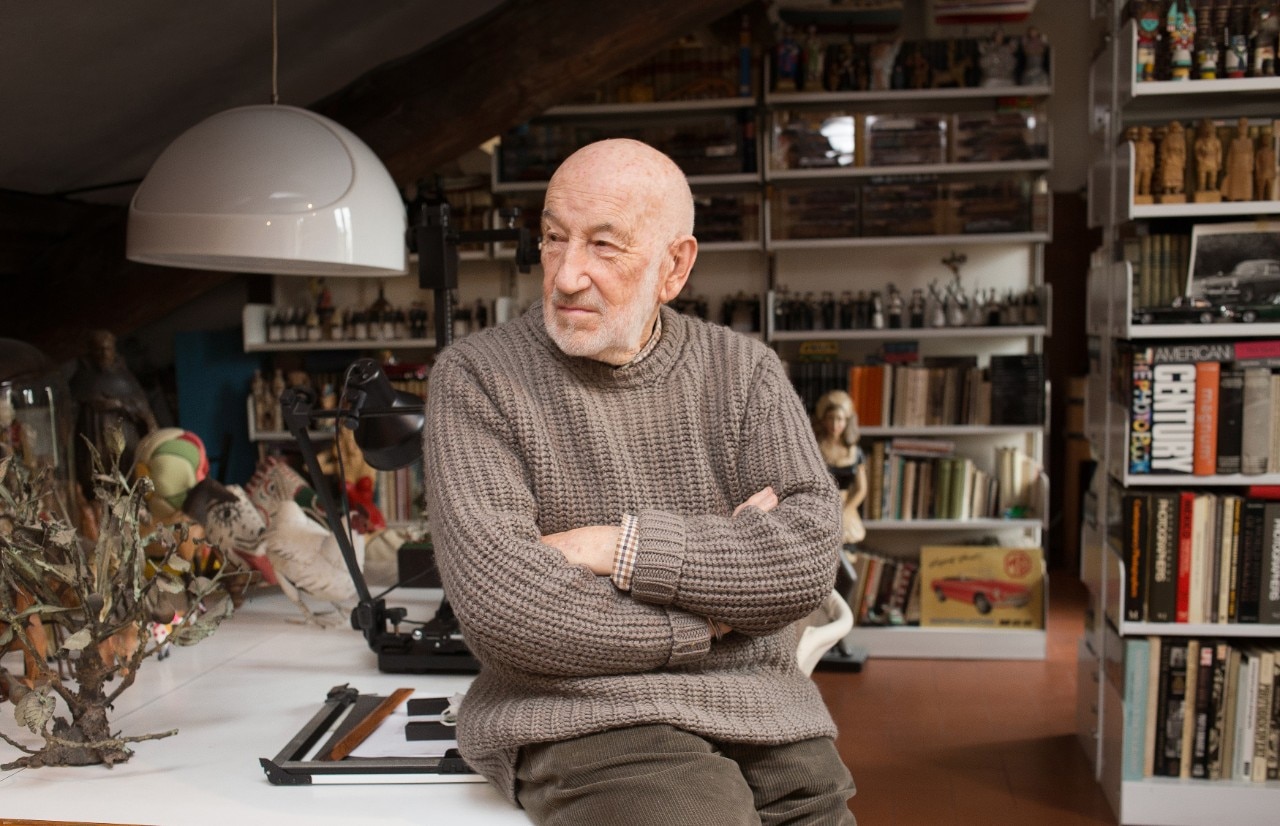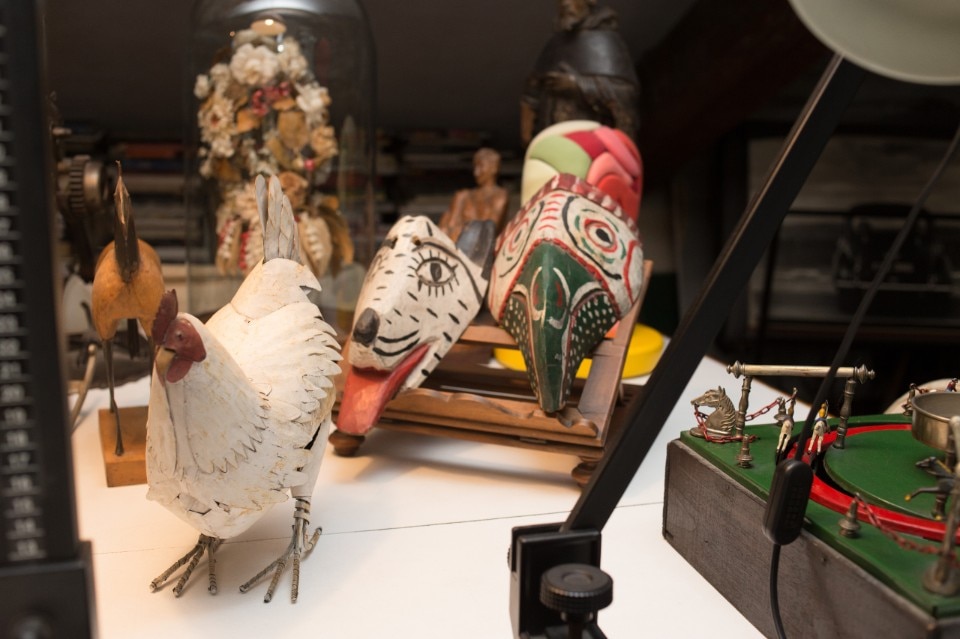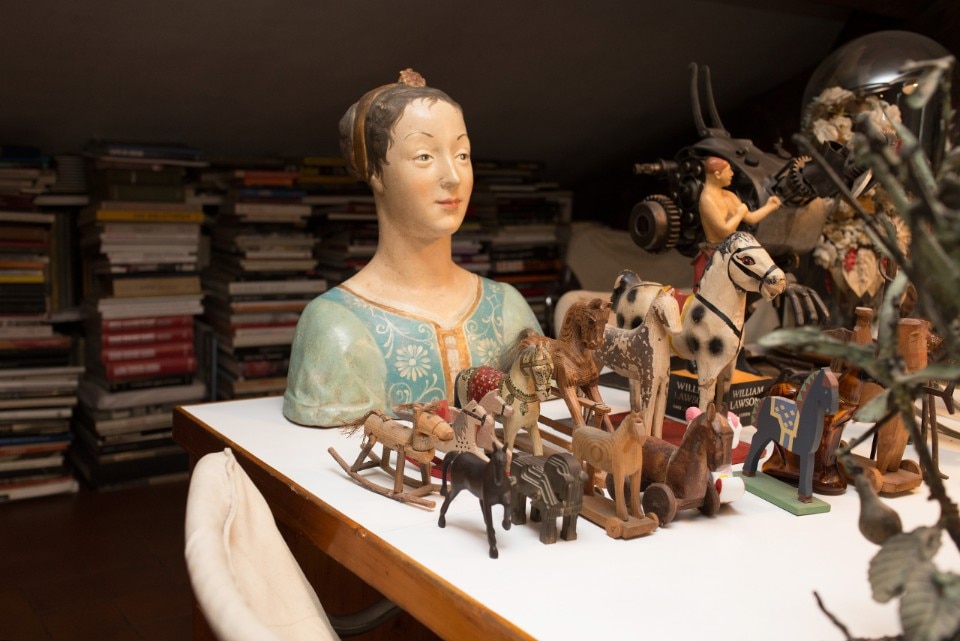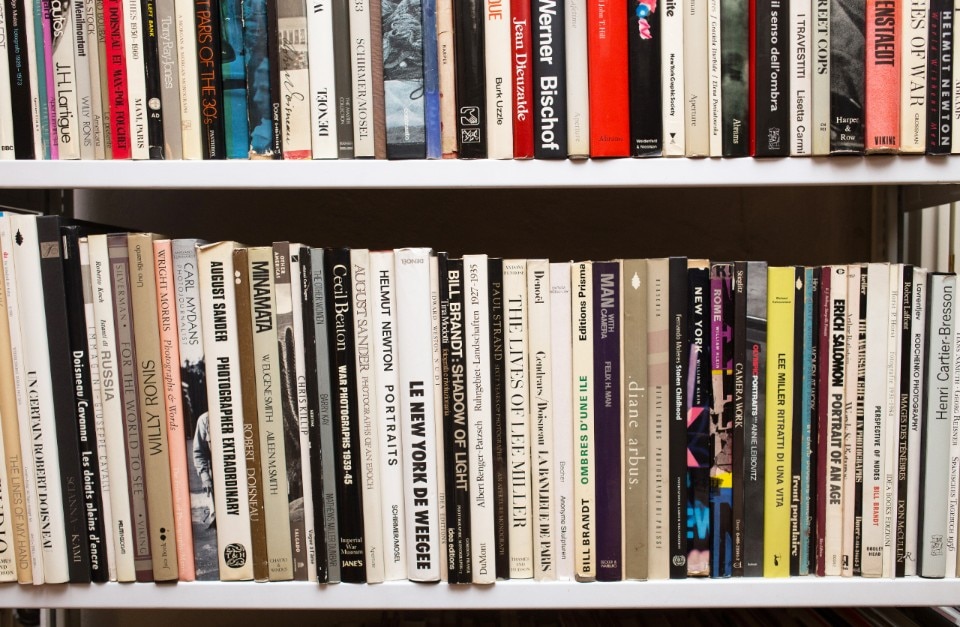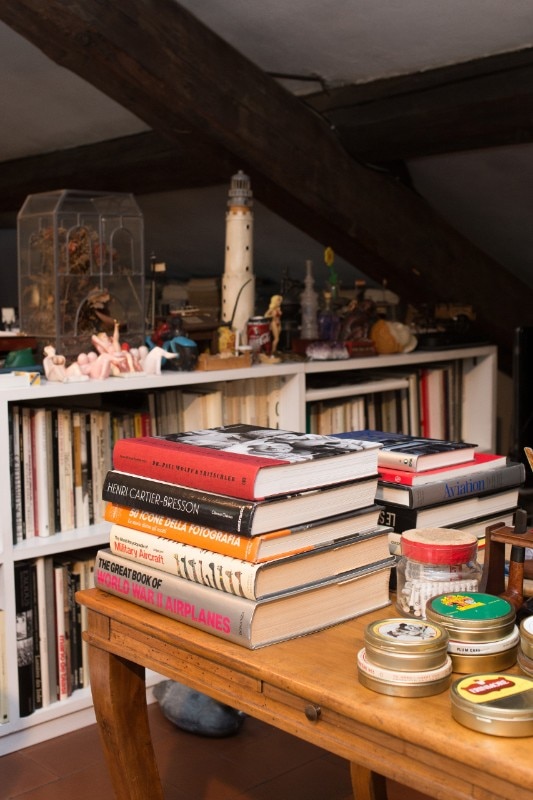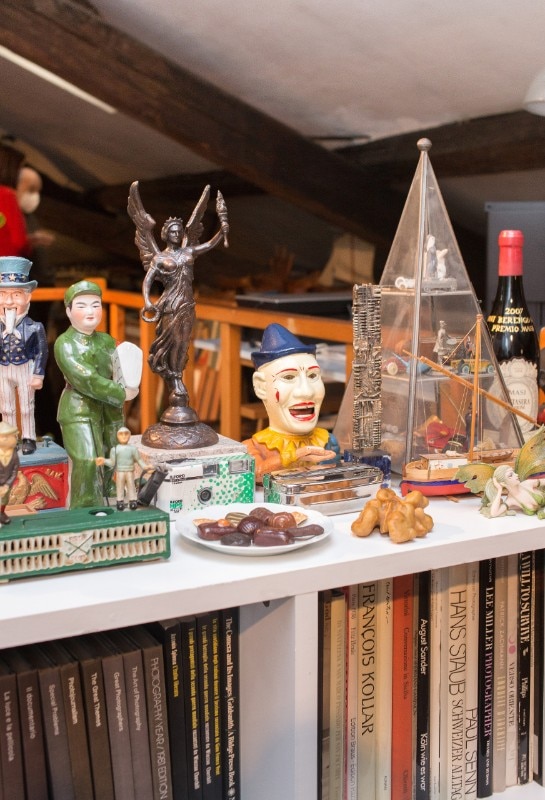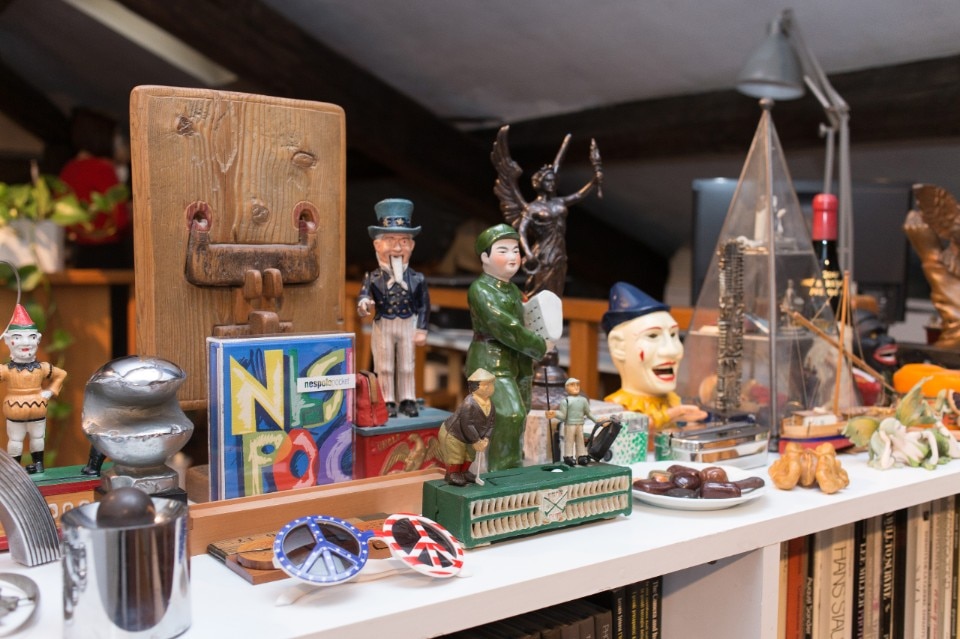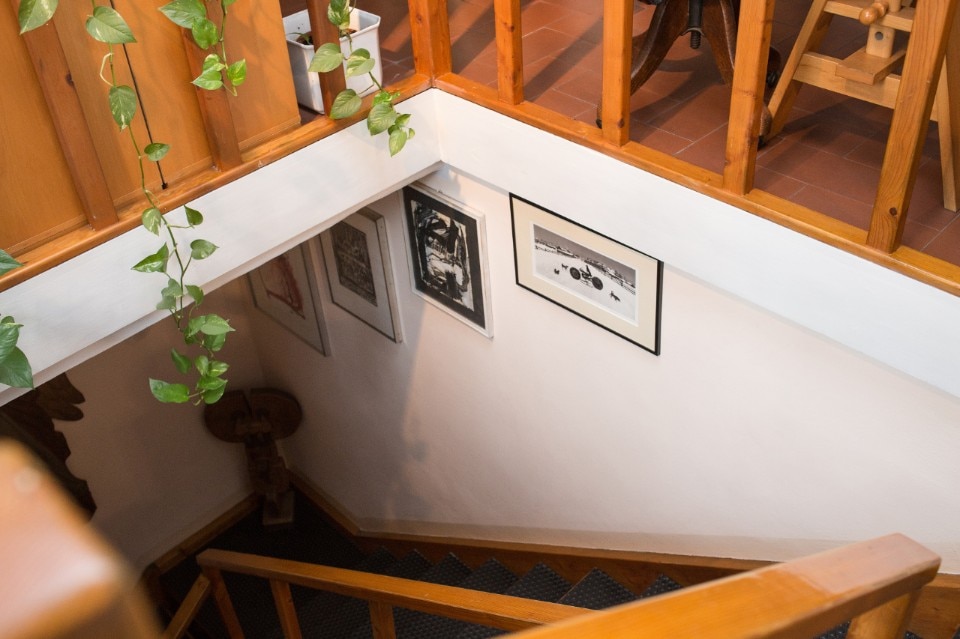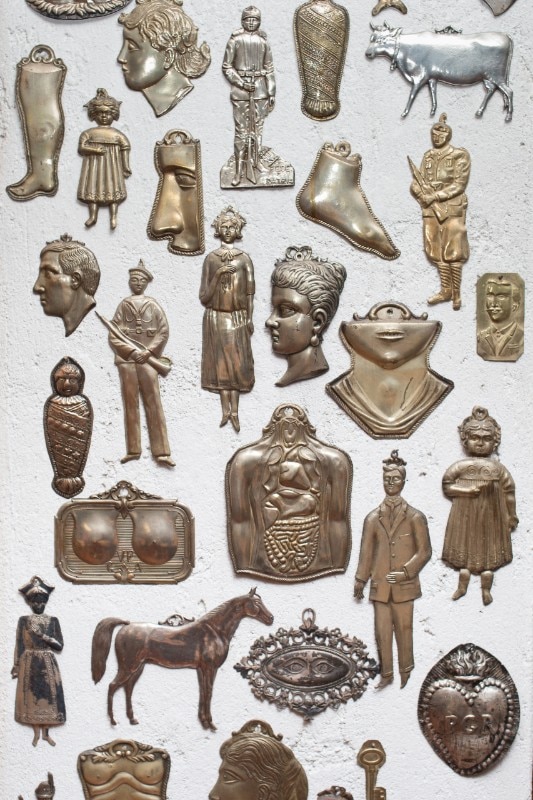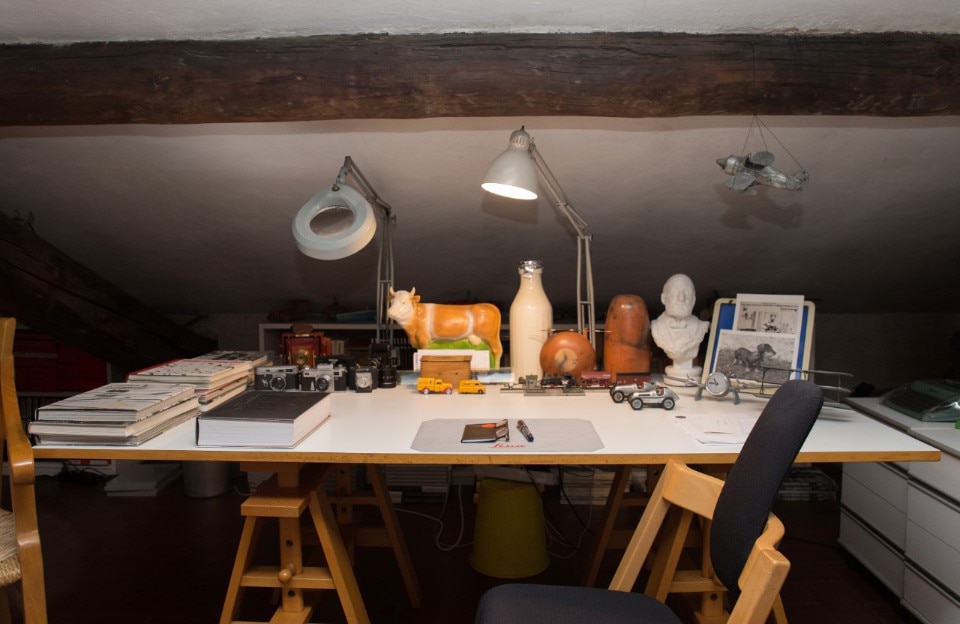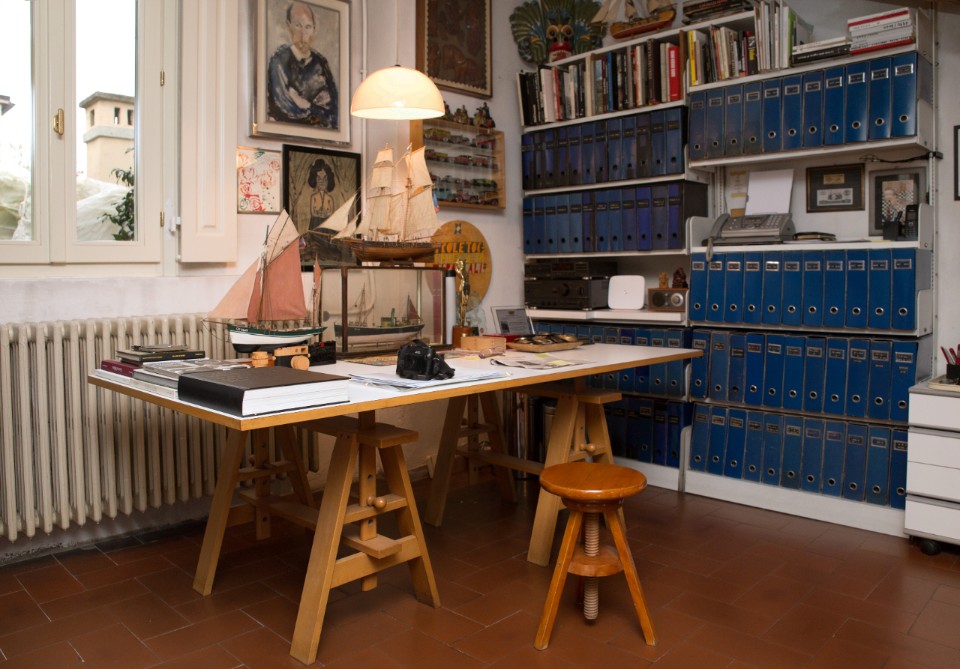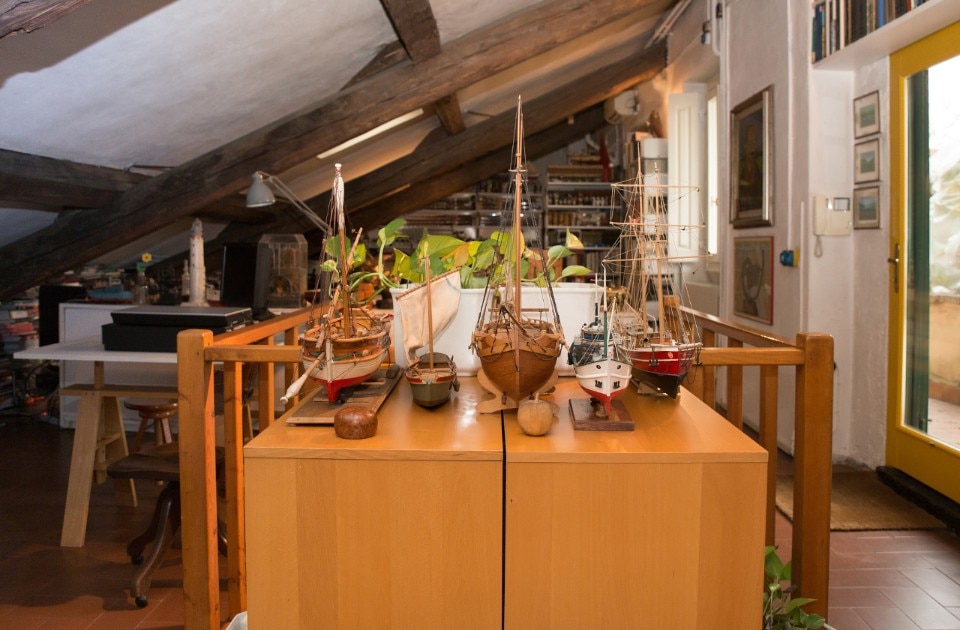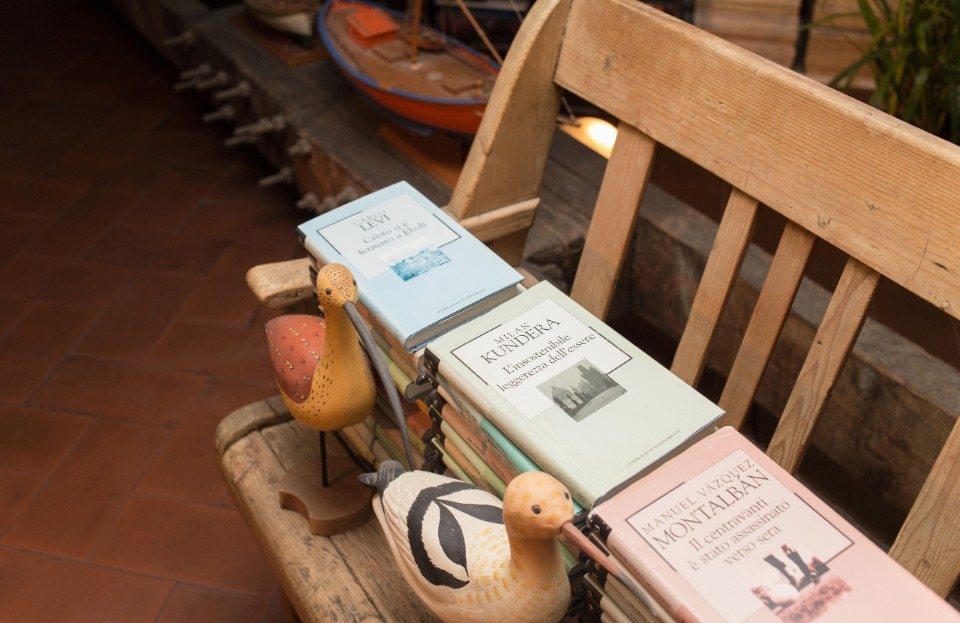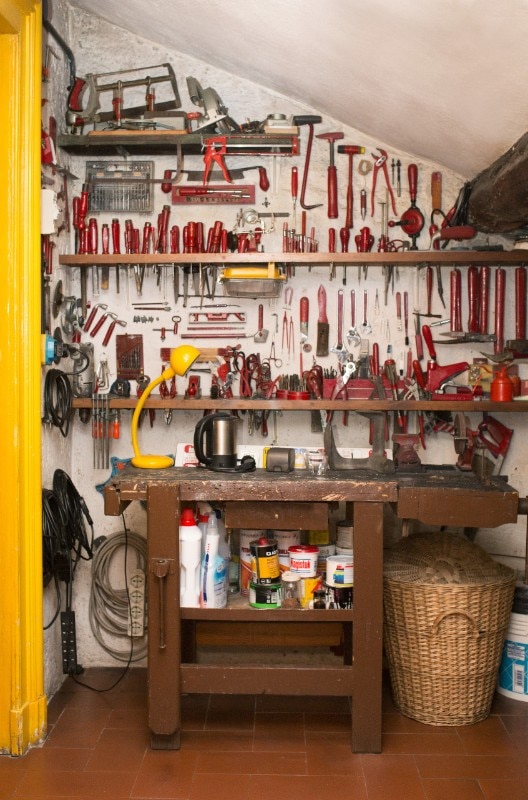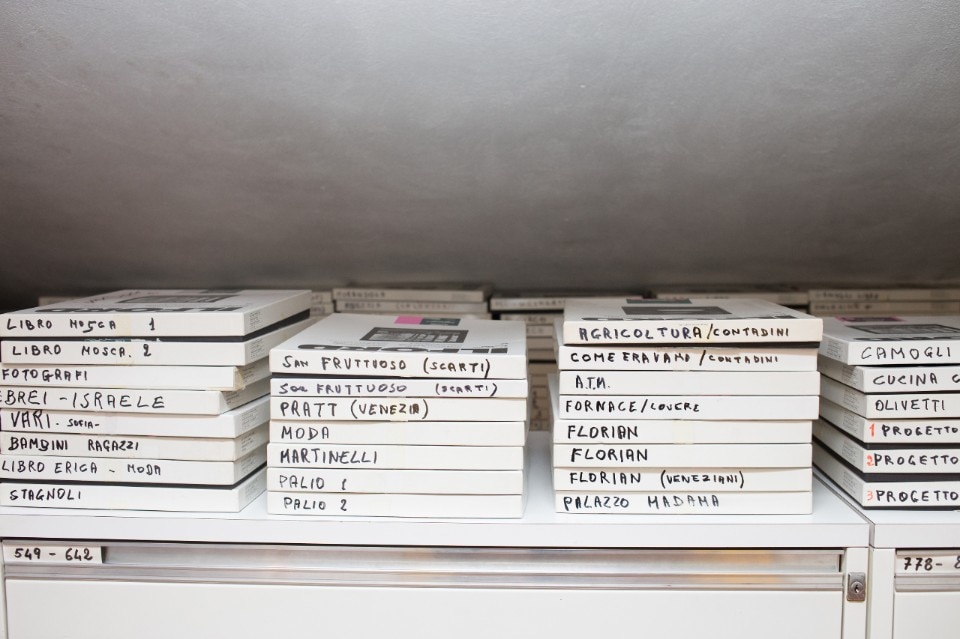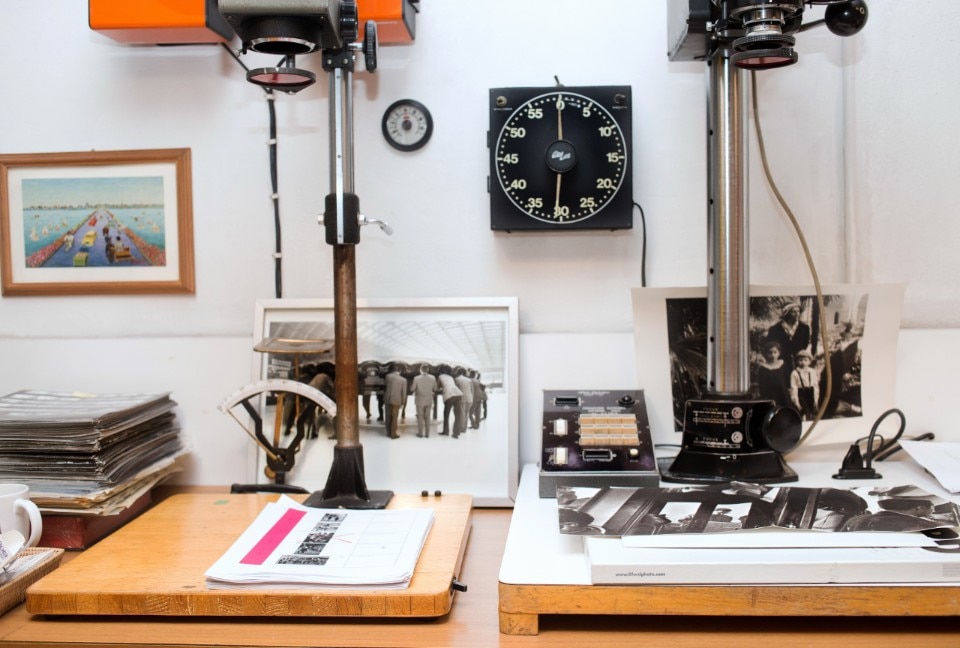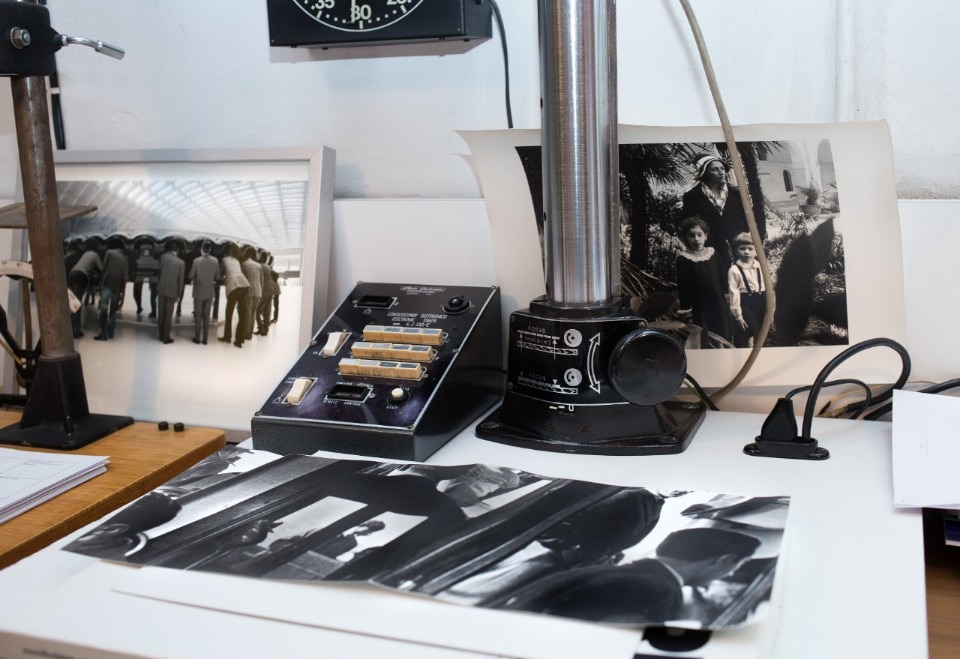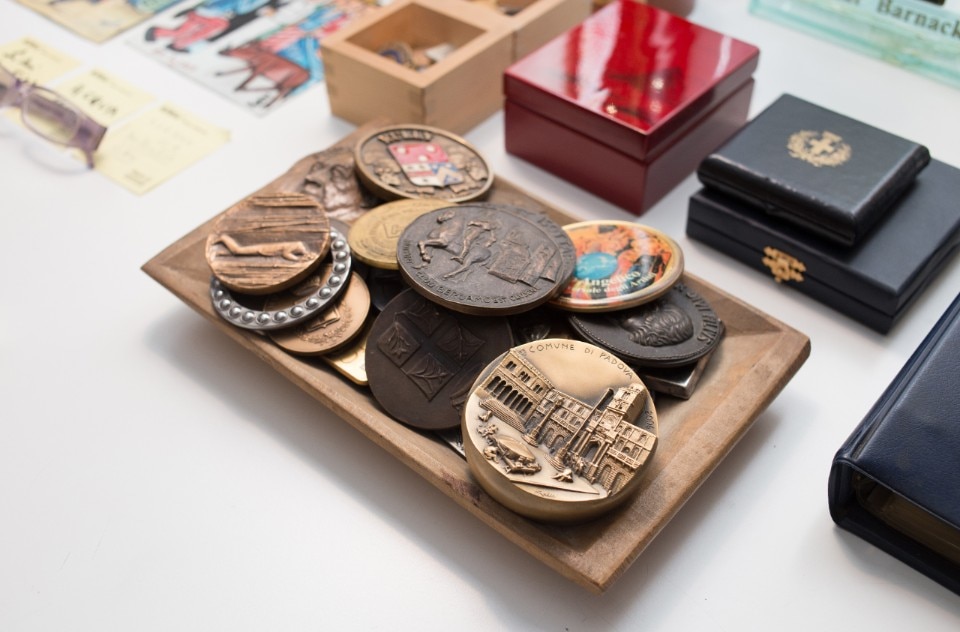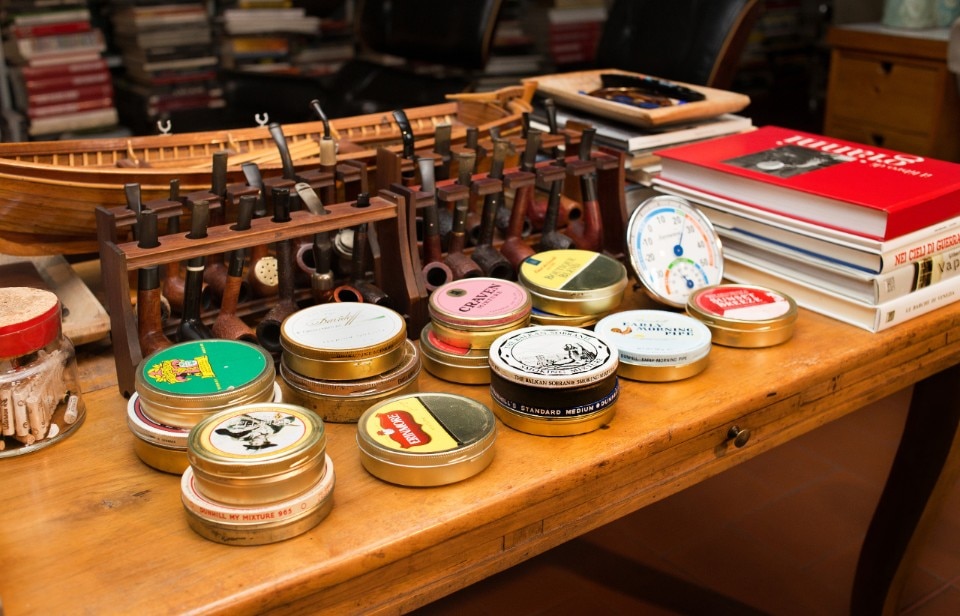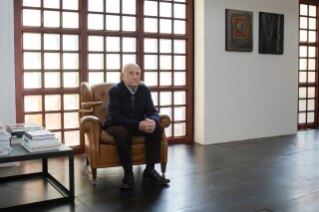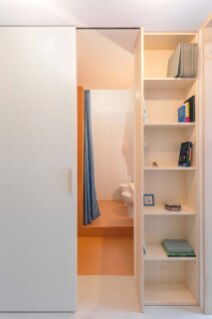“Being a witness to our time” is a phrase that says a lot about Gianni Berengo Gardin’s immense work, but also about his home. Here, in the attic, the bright studio contains hundreds, perhaps thousands of books. Stacked on the floor, according to Gianni “in an apparent order”, countless photography books collect the shotsof all the masters of the eye who have told us and will keep on telling us so much about our history. Among these columns of pages, over 260 volumes bearing his name can be found.
In addition to these, the attic-studio also houses a collection of one and a half million negatives, illustrating the evolution of landscape and society in Italy and elsewhere, from WWII to the present day. A visual heritage arranged along a corridor, in the middle of which is the door to the dark room. Today, that room houses the office of his daughter Susanna Berengo Gardin, thanks to whom this priceless visual treasure is cared for, shared and enhanced. “My job is more a work of documentation than an artistic one”, explains the photographer, who emphasises the value he places on doing. “I have always had a great passion for manual skills, and I always say that the photographer's work is a manual one. I have spent years and years working in the darkroom, printing photos”.
This artisan passion says a lot about his understanding of “the work of the photographer” and is reflected in his studio: from the table at the centre designed by Berengo Gardin himself, to the model boats he built as a youngster, to a DIY cabinet full of all sorts of tools.
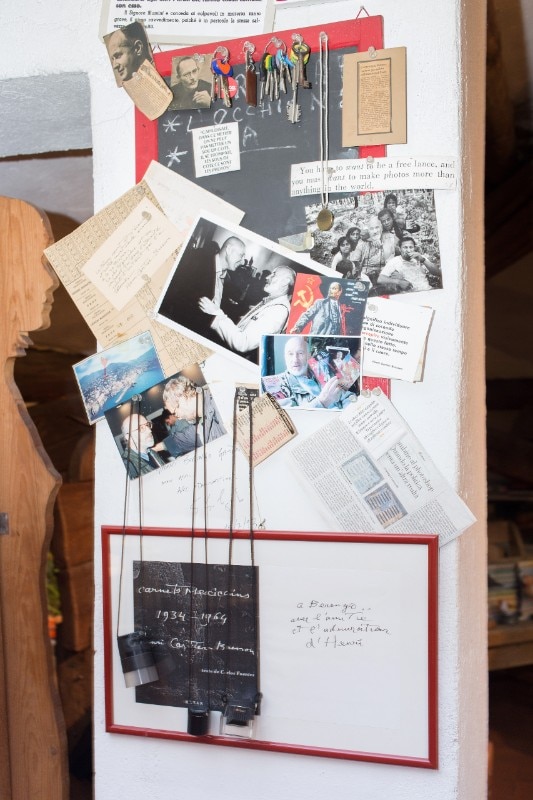
Amidst newspaper cuttings, phrases and photographs held up by a drawing pin, a note in French stands out: “To Berengo, with friendship and admiration”. It is signed ‘Henri’. “Carter-Bresson’s admiration is more than just a pleasure”, says Gianni, “I consider it a gold medal of valour”. In that very corner, among the prizes and awards, are the pictures of those distinguished figures that profoundly influenced him: Salgado, Koudelka – to name but a couple – it is difficult to say whether they were first friends or masters. “I’m not saying you only learn photography from books, but you are always influenced by the great masters”; in order to understand certain choices, learn to distinguish and, above all, understand how to shed light on reality, Berengo Gardin explains.
The sincere, direct anthropological love with which the photographer captured the moments, rituals, kisses and wounds of our country is also found here, in a collection of the most diverse objects: on the shelves there is a whole procession of small terracotta statues purchased in Brindisi, while, resting on the floor, are the silhouettes of two funny, voluptuous women straight from an English pub: “I came back carrying them under my arm, imagine that at the airport!”; finally, the collections of pipes, cars and toys.
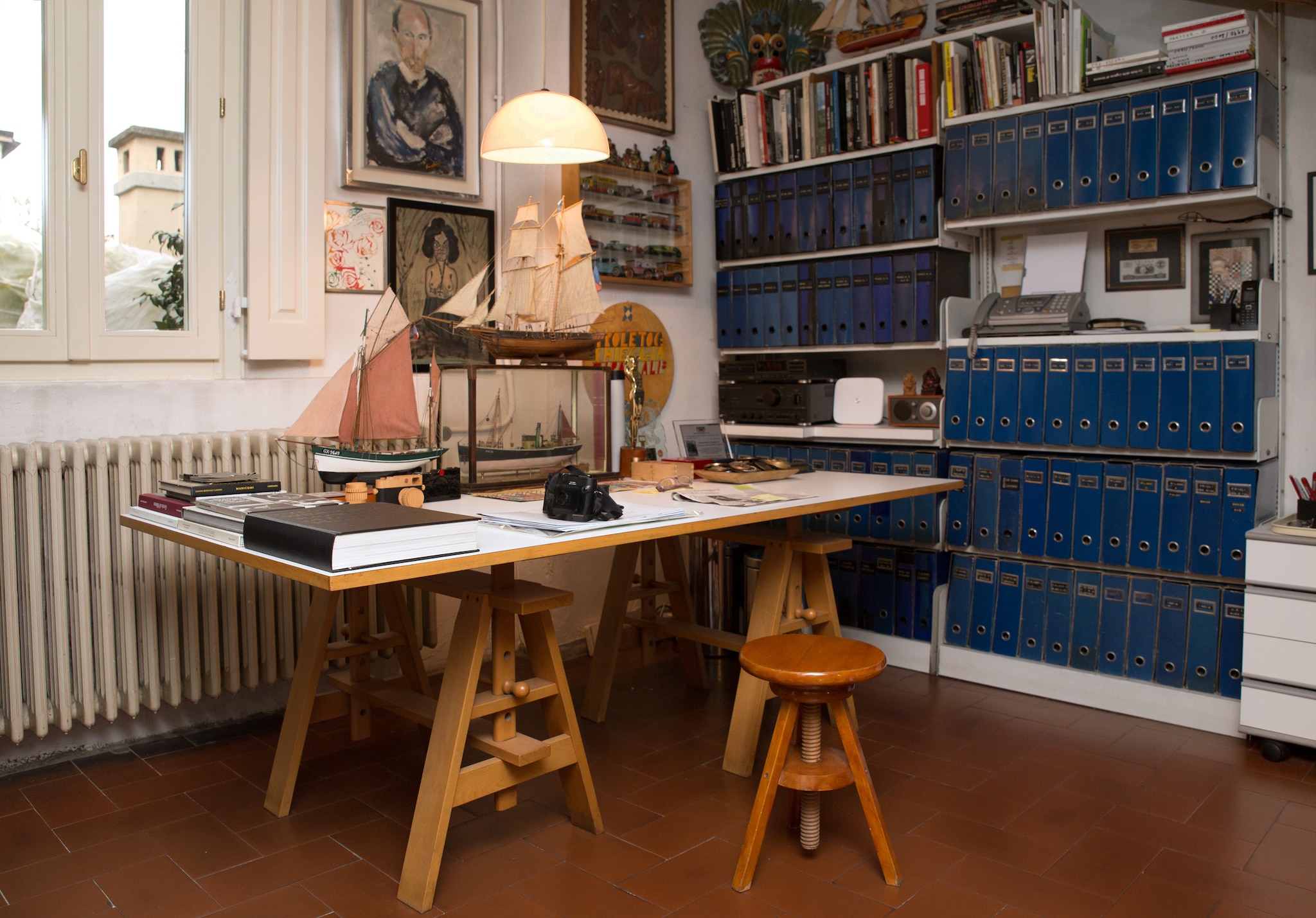
“I used to be mad about collecting things, or perhaps you might say I was a hoarder. On every trip I would bring back something that reminded me of that place, but they are all kitsch things of little value.” All of them, apart from a few mysterious objects that peep out, such as a bottle received as a gift from Giorgio Morandi’s sisters, precisely one of those the painter loved to portray in his still lives.
I am a photographer, not an artist-photographer, or a photographer-artist, as many like to call themselves today, but then again, things have changed and there are not enough commissions to be able to carry out certain kinds of jobs.
It was the same Cartier-Bresson who said that “reportage photography needs an eye, a finger and two legs.” A thirst for truth, the same thirst that led Berengo Gardin to capture, together with his colleague Carla Cerati, the condition of patients in asylums in the project “Morire di classe”, published by Franco and Franca Ongaro Basaglia. A memorable moment in the history of Italian photography and publishing.
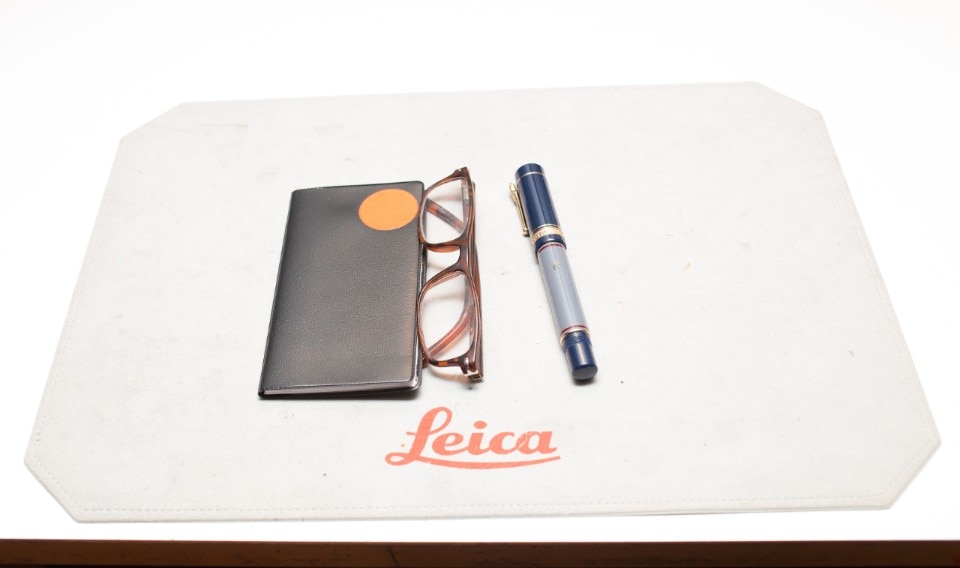
“I am a photographer, not an artist-photographer, or a photographer-artist, as many like to call themselves today, but then again, things have changed and there are not enough commissions to be able to carry out certain kinds of jobs”, says Gianni, who is against anything that takes us away from the original meaning of being a photographer, as well as anything that alters the image: “I hate photoshop!” he jokingly exclaims with disapproval. The pureness of the image, that black and white that defines its reflections and shadows, without the distraction of colour, is the feeling that has accompanied every trip of Berengo Gardin, who would return to this place only to change cameras and stock up on new film, but this is where he spends more time now. “And if there is nothing to do, he makes something up”, says Susanna, smiling.
“Even in the proofs there is always something of interest to find, to dig up, perhaps searching for unpublished or overlooked shots, as he did during the pandemic”. It is here in this studio, where every small object leads back to “somewhere else”, that Gianni likes to spend his days when he is not in his beloved Liguria, a homeland he can always return to: “Once I wasn't interested in plants”, he says, “I didn’t even consider it, now that I have fewer commitments, I have become very passionate about gardening: in Camogli I planted 35 fruit trees myself, apricots, cherries, pineapples, I like to take care of my garden”.
Gianni Berengo Gardin is considered one of the masters of Italian photography. Born in 1930, he moved to Milan in 1965 where he began his long career as a reporter, working on social research (his work on psychiatric institutions and the Roma), industrial, architecture and landscape photography. He dedicated himself above all to the production of books, publishing over two hundred and fifty books of photographs. His works can be found in the collections of the most important international museums and foundations. La più gioconda veduta del mondo (The most playful view in the world) mentioned in the title is a book published in 2018 by Contrasto, containing an unpublished work by BerengoGardin that portrays Venice from a particular viewpoint: the same window from which, five hundred years before, Pietro Aretino looked out.
Opening image: Gianni Berengo Gardin. Photo Elena Vaninetti


